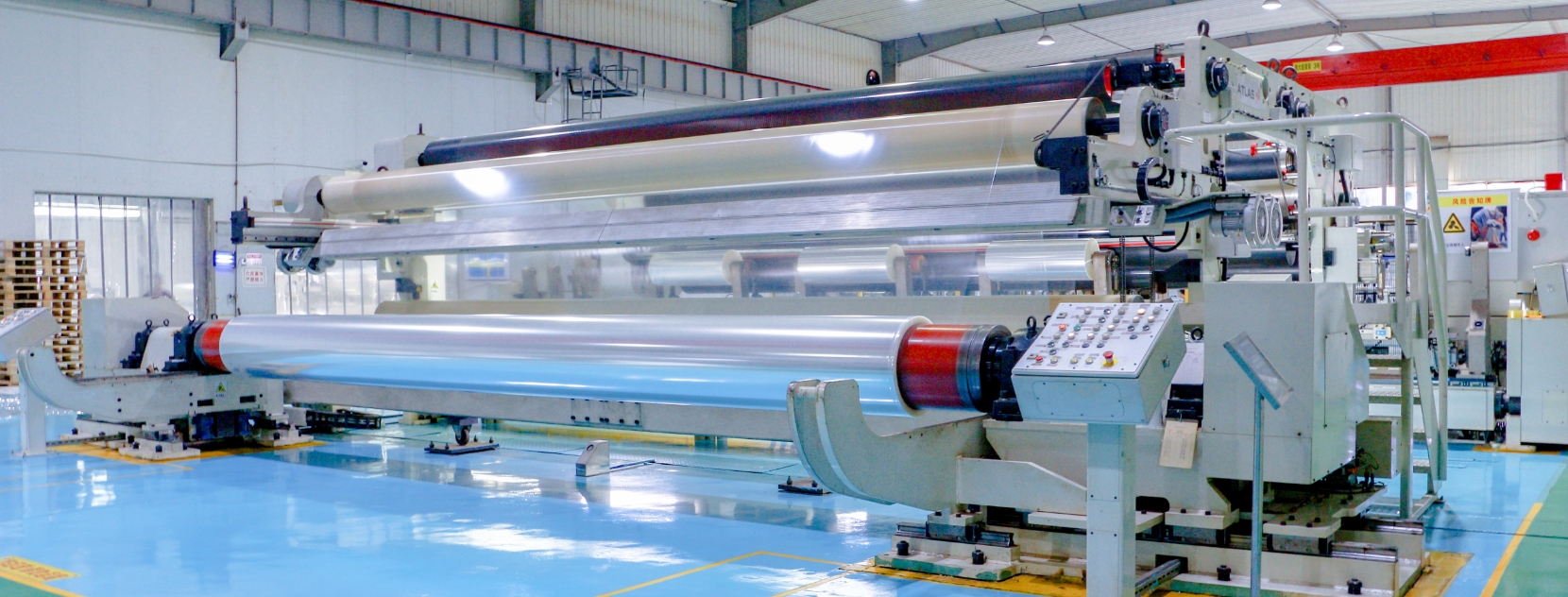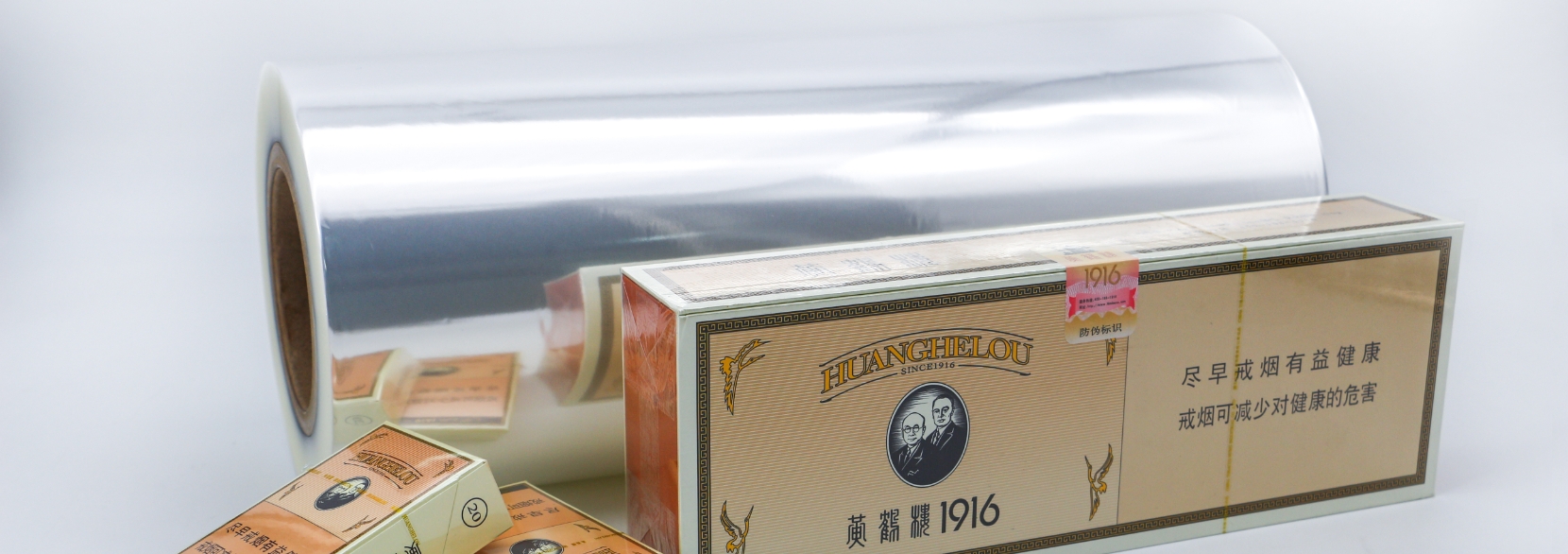What is BOPP Cigarette Film?
BOPP cigarette film, also known as "Biaxially Oriented Polypropylene Cigarette Film" or simply cigarette film, is produced by co-extruding and stretching various functional polypropylene materials. Currently, domestic manufacturers typically use a three-layer (A/B/C) co-extrusion process to produce high-performance BOPP cigarette films, which feature high transparency and gloss. The material is non-toxic, has a stable molecular structure, and offers a certain degree of barrier protection against odors and moisture, making it an ideal material for cigarette packaging. Its excellent properties make it the perfect choice for cigarette packaging:
High Transparency and Gloss: Enhances the visual appeal of cigarette packaging.
Non-toxic and Stable: Ensures safety and durability.
Barrier Properties: Prevents the intrusion of odors and moisture, preserving the quality of cigarettes.

Key Properties and Applications of BOPP Cigarette Film
1. Slip Properties (Coefficient of Friction)
The coefficient of friction is a key indicator of the slip properties of BOPP cigarette film, which is crucial for cigarette packaging production. The film needs to maintain good slip properties at high temperatures to meet the demands of high-speed packaging lines (400-600 packs per minute).
Low Coefficient of Friction: The outer surface of the film must maintain a low coefficient of friction with metal parts (such as film channels, forming wheel grooves, folding plates, etc.), especially under high-temperature conditions.
Differential Slip Characteristics: The inner surface of the film should have a higher coefficient of friction with the cigarette box paper to ensure accurate positioning within the forming wheel, achieving a compact packaging effect.
Slip Agent Migration: The slip agents in BOPP cigarette film are migratory and require time to migrate to the film surface to perform their function.
2. Anti-static Properties
Static electricity can have a negative impact on the cigarette packaging process (cutting, conveying, folding), leading to packaging machine malfunctions. Therefore, anti-static properties are key to ensuring the smooth operation of the packaging machine.
Static Electricity in the Film: Static electricity inherent in the film is relatively easy to control.
Friction-Induced Static: Static electricity generated by friction during the packaging process is more difficult to control and more harmful.
Anti-static Agent Addition: Anti-static agents are usually added to the middle layer of the film, and the film requires a certain storage period to achieve the best anti-static effect.
Static Elimination Methods: Metal parts or static eliminators on the packaging machine can help eliminate static electricity, and environments with higher humidity are also beneficial for static removal.

3. Stiffness
Higher stiffness ensures high-quality folding during the packaging process, reduces downtime, and allows for rapid heat sealing, making it suitable for high-speed packaging machines.
Heat Sealing Temperature Range: The heat sealing temperature may vary depending on the packaging machine or environment, so a wider heat sealing temperature range can increase the suitability of the cigarette film.
Controlling Heat Sealing Temperature: If the heat sealing temperature range is too narrow, it can be difficult for the packaging machine to control the heat sealing temperature, affecting packaging quality.
4. Shrinkage Rate
BOPP cigarette film is divided into ordinary and heat-shrinkable types.
Ordinary Cigarette Film: Has a lower heat shrinkage rate (2%-5%) and is suitable for soft packs and cartons of cigarettes.
Heat-shrinkable Cigarette Film: Has a higher heat shrinkage rate (>7%) and can achieve a tight packaging effect, overcoming the issues of relaxation and wrinkles that can occur with ordinary cigarette film in hard box packaging.
5. Optical Properties
Haze: Also known as transparency, refers to the percentage of transmitted light that deviates from the incident light direction by more than a certain angle. Lower haze allows the trademark patterns on the cigarette package to appear clearer and more vivid.
Gloss: Refers to the degree of light reflected from the film surface. Higher gloss can give the cigarette package a bright visual effect.
The performance of BOPP cigarette film directly affects the quality and efficiency of cigarette packaging. Choosing the right cigarette film and controlling its slip properties, anti-static properties, stiffness, shrinkage rate, and optical properties are key to ensuring smooth cigarette packaging.

-

Shiner Presents at World Tobacco Middle East 2025
On November 11, 2025, our international marketing team participated in the World Tobacco Middle East 2025 exhibition (Booth T186) in Dubai, engaging in in-depth exchanges with global tobacco industry partners and exploring business opportunities. We also presented Chinese gifts.

2025-11-12
-

Contact Us
Hi-Tech Zone, Hainan, China
Email:zhuhaiyan@shinerinc.com
Tel: +86-0898-6858 1104
Fax:+86-0898-6858 5861


